The UIAA’s Summit Series explores a number of the world’s most iconic and challenging mountains and mountain ranges. Produced by the UIAA Medical Commission, they offer information on numerous areas including ascent profiles, acclimatization and preparation. The papers also offer links to live information and introduces other useful areas of UIAA expertise.
About Lenin Peak
Lenin Peak (also known as Lenin Atyndagy Choku – Kyrgyzstan, Pik Lenina – Russian, and now commonly as Ibn Sīnā Peak – Tajikistan) is the highest peak of the Trans-Alai range of the Pamir mountains in central Asia on the border of Kyrgyzstan and Tajikistan with the highest summit of 7134 meters.
The peak was first climbed by a German-Russian expedition in 1928 from the south. The northern approach was first ascended by Soviet climbers in 1934 and the approach via the Razdelnaya Peak, now established as normal approach, was first climbed in 1954.
Lenin Peak has a reputation of being one of easiest and most accessible 7000ers and attracts a huge volume of climbers each season. From a technical point of view the ascent is easy to moderate climbing but a sharp continental climate with varying weather condition and strong winds can often make it more challenging.
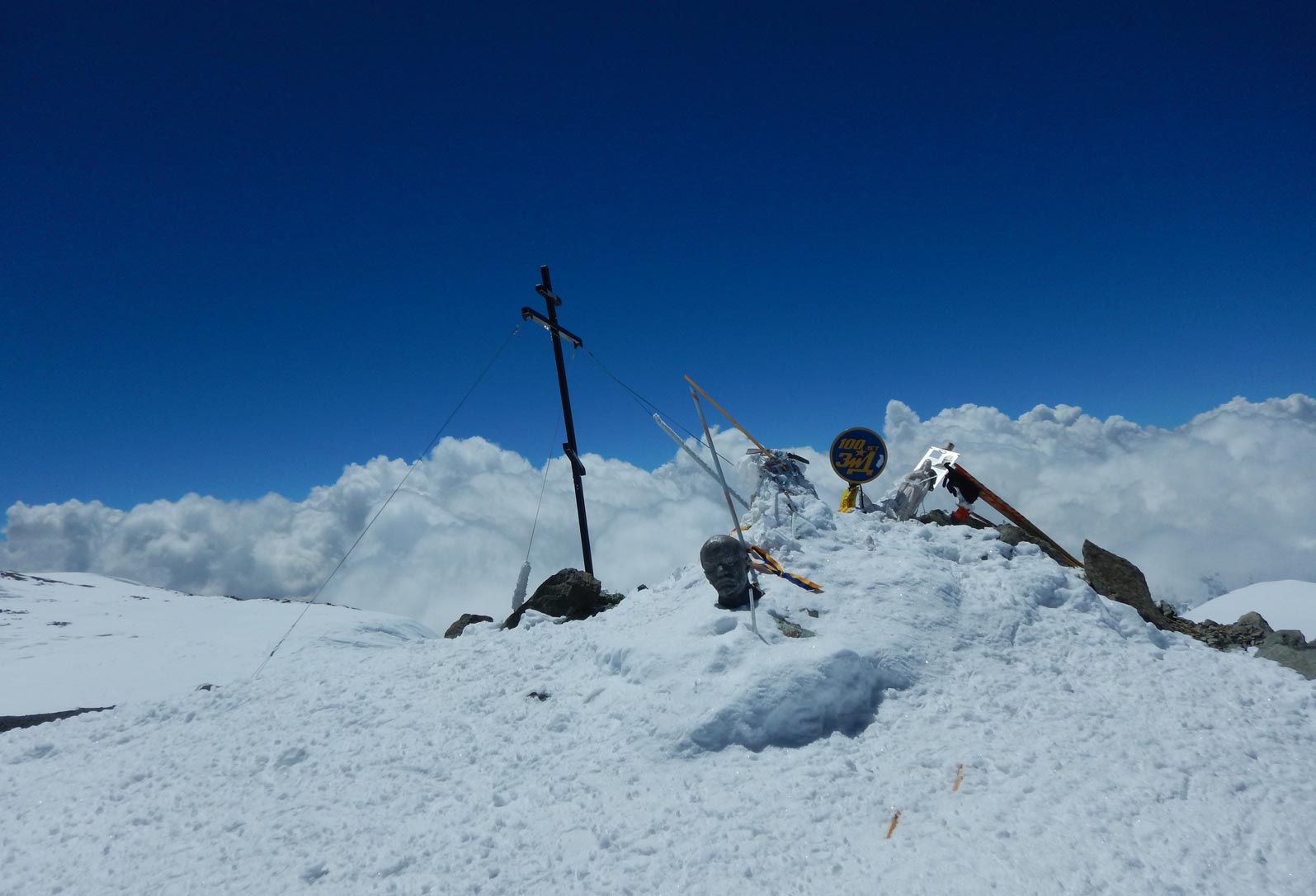
Ascent of Lenin Peak
Access
Most climbers arrive to Base camp at Atschik Tasch from Osh via bus or car. The drive takes about seven hours and logistics are usually offered by agencies organising the climb.
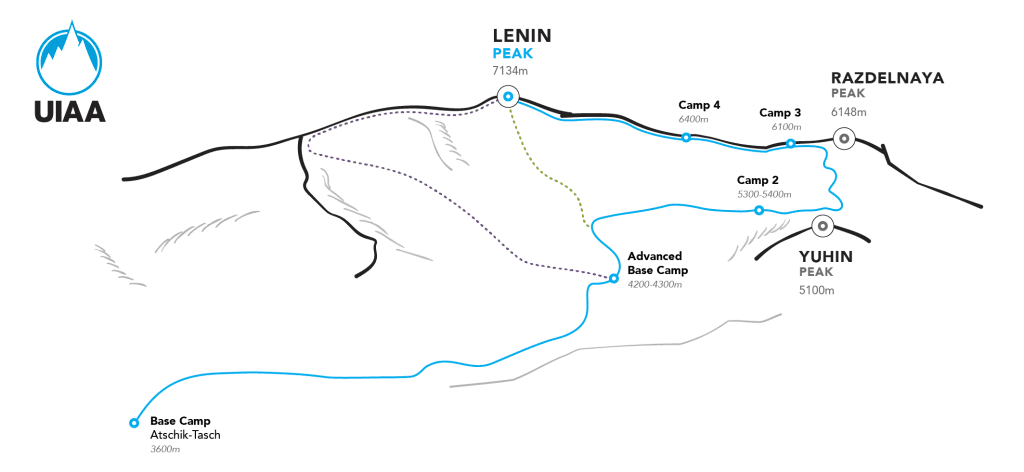
Ascent Profile
Advanced Base Camp 4200-4300 m
Yukhin Peak (optional aclimatisation side trip) 5100 m
Camp 2 5300-5400 m
Camp 3 6100m
Razdelnaya Peak 6148m
Camp 4 6400 m
Lenin Peak 7134 m
Route Description
Most climbers arrive in Kyrgyzstan through the capital city Bishkek. Osh, the second largest city in Kyrgyzstan is the starting point for most expeditions and can be reached by internal flight (1 hour) or by bus / shared taxi (12-14 hours). Osh is the main starting point for expeditions to Lenin Peak. Travel agencies run buses to base camp at Atschik Tasch. The drive usually takes about 7 hours.
Base Camp
Base camp is in Alay valley in lush green meadows. Travel agencies have pre-set base camps with two-person tent accommodation, a dining tent providing three meals per day, possibility of hot shower, toilets, and storage facility. It is worth spending a few days at base camp for initial acclimatisation. There are numerous trekking possibilities on neighboring slopes and peaks. The base camp manager can help climbers arrange transport of equipment by mules and horses to advanced base camp. If sufficiently acclimatised there is no need to return to base camp.
The 17km path to advanced base camp goes along Lenin glacier, at the beginning through meadows, but later ascends on lose gravel moraine reaching a not so high col with a stunning view of the main glacier and the Lenin Peak massif. From here it is a long traverse toward camp 1. In summer months of the typical climbing season, it is usually dry, and no crampons are required. The ascent takes from 4-6 hours.
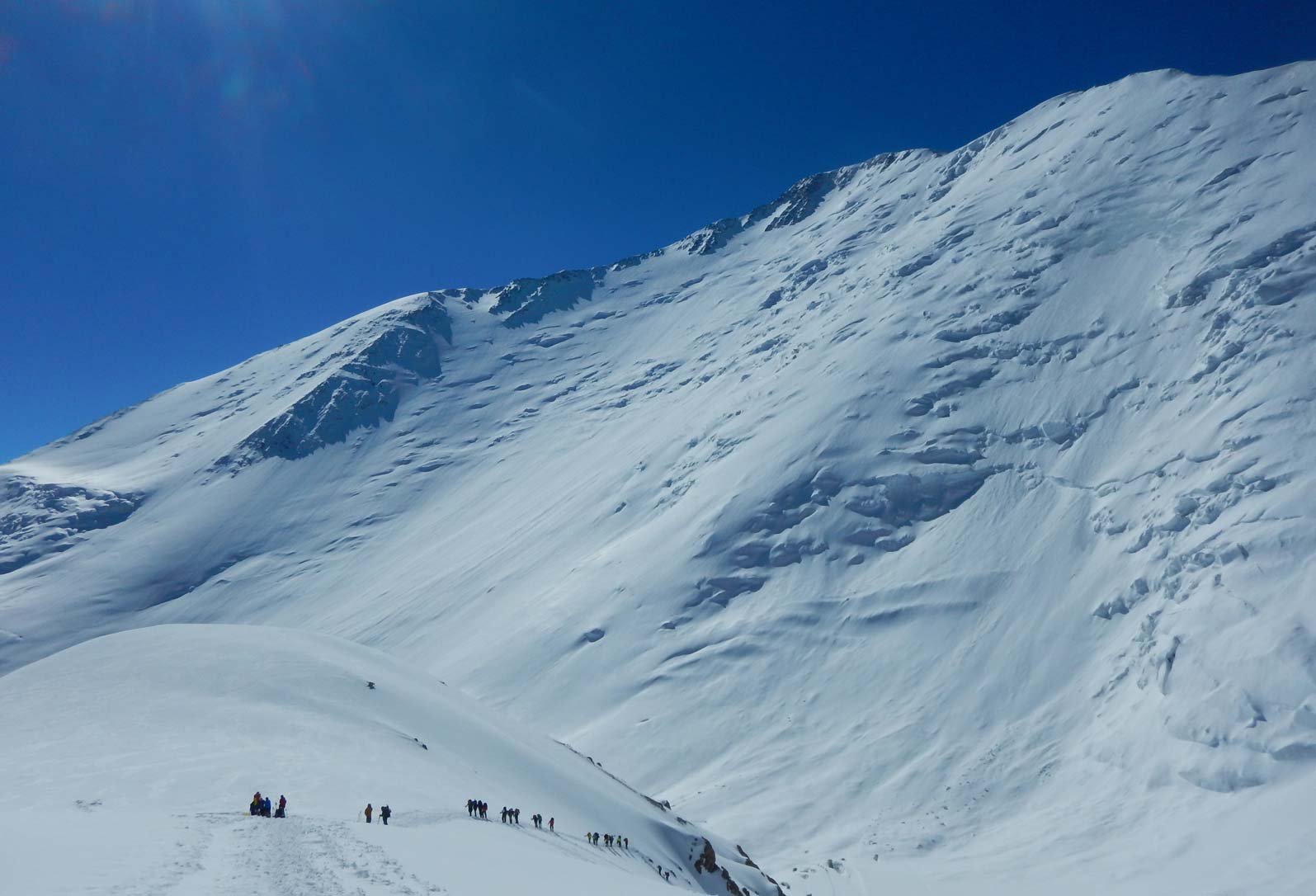
Route Description
Advanced Base Camp
Advanced base camps of different travel agencies are spread along glacier moraines at an altitude of about 4200 m. The camps are organised similar to base camp but facilities are a bit more basic. Accommodation is provided in 2-person tents, offering three meals per day which are provided in communal dining tent, there is possibility of arranging hot shower, and drop toilets are available.
Yukhin peak with an altitude of about 5100 m is an optional acclimatisation side trip. Depending on snow conditions crampons and ice axes might be necessary for the final ascent, but the climb is technically and orientationally undemanding. The top of Yukhin peak is flat with options to set up a tent for the night for better acclimatization before proceeding towards Lenin peak.
From advanced base camp climbers will need technical equipment such as crampons, an ice axe, helmet, harness and rope and must be self sufficient with a tent and food. Some agencies can arrange porters for higher camps and offer set-up tents at higher camps (camp 2 and 3). Being self-sufficient up on the mountain gives more flexibility and safety. Between camp 2 and camp 4 there are numerous safe spots to set up a tent, offering the possibility to escape overcrowded and dirty main camping spots.
Camp 2
From advanced base camp the route quickly descends from moraine to the Lenin glacier. The approach to the wall is fairly flat without bigger crevasses. At the foot of the wall the glacier is heavily crevassed and prone to avalanches.
The wall itself is around 200m high and steep, up to 50 degrees. The route can change on a daily basis, depending on the condition of the crevasse. The ascent is safer and easier in early morning hours since the snow is harder, and conditions are less avalanche prone. After a steep climb the way turns right, traversing a not so steep slope until it reaches a corridor where C2 is located. The last part before camp 2 is less steep but heavily crevassed and exposed to avalanches. The ascent can take 4-7 hours.
Camp 2 is set up on the edge moraine of a huge snow bowl. Depending on snow conditions camp 2 can be at least partly set up on rocky moraine. Expect it to be crowded and dirty. There is no fixed toilet.
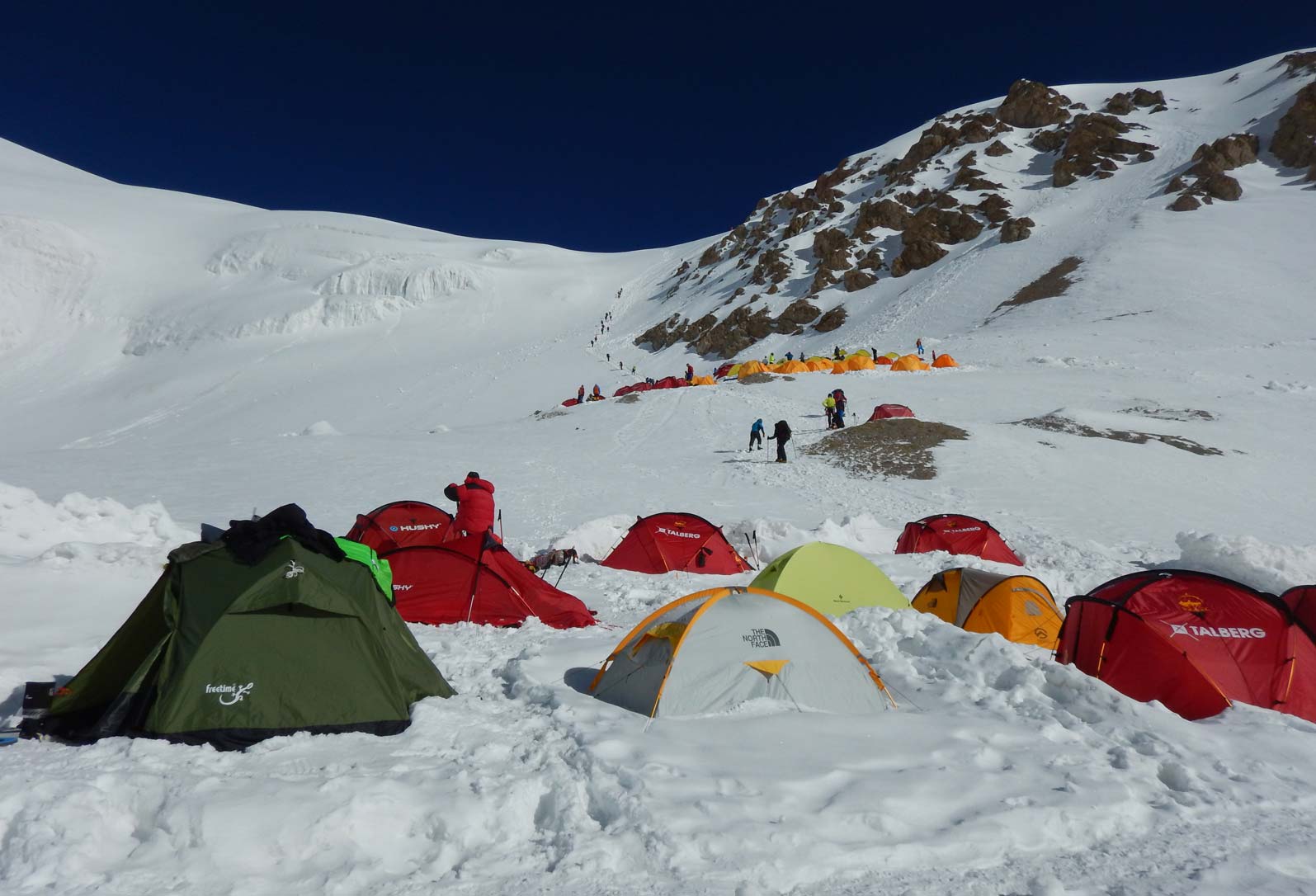
Route Description
Camp 3
From camp 2 the route follows the wide ridge all the way to camp 3. The initial and last part are steep, with a gentler middle part. Camp 3 is set up near Razdelnaya peak and is exposed to wind. The ascent takes 3-6 hours. There are numerous safe spots for camping along the ridge between camp 2 and 3, but all are exposed to wind.
Camp 4
Camp 4 can be set up on the summit ridge. From camp 3 the ridge first descends for about 100m and then steadily climbs to a flatter shoulder. The ridge is exposed to strong winds and a dry rocky surface can often be found for pitching tents. The advantage of setting up camp 4 is a considerably shorter summit day and better chances of summiting. The obvious disadvantage is dragging all the gear up an additional 300 meters. Expect 2 to 3 hours for the climb between camp 3 and 4.
Summit
From camp 4 the route follows the west ridge all the way to the summit. Shortly after camp 4 there is a steep (50°) exposed section that has a fixed rope during the main climbing season or requires basic ice climbing skills. Beyond the steep section, the ridge is wider with some flat sections. In nice weather the climb is straight forward but in misty or cloudy conditions orientation can be challenging. The summit itself is flat and not so prominent from its surroundings, thus may be difficult to locate in a fog or storm. The ascent from camp 4 to the summit takes about 5-6 hours.
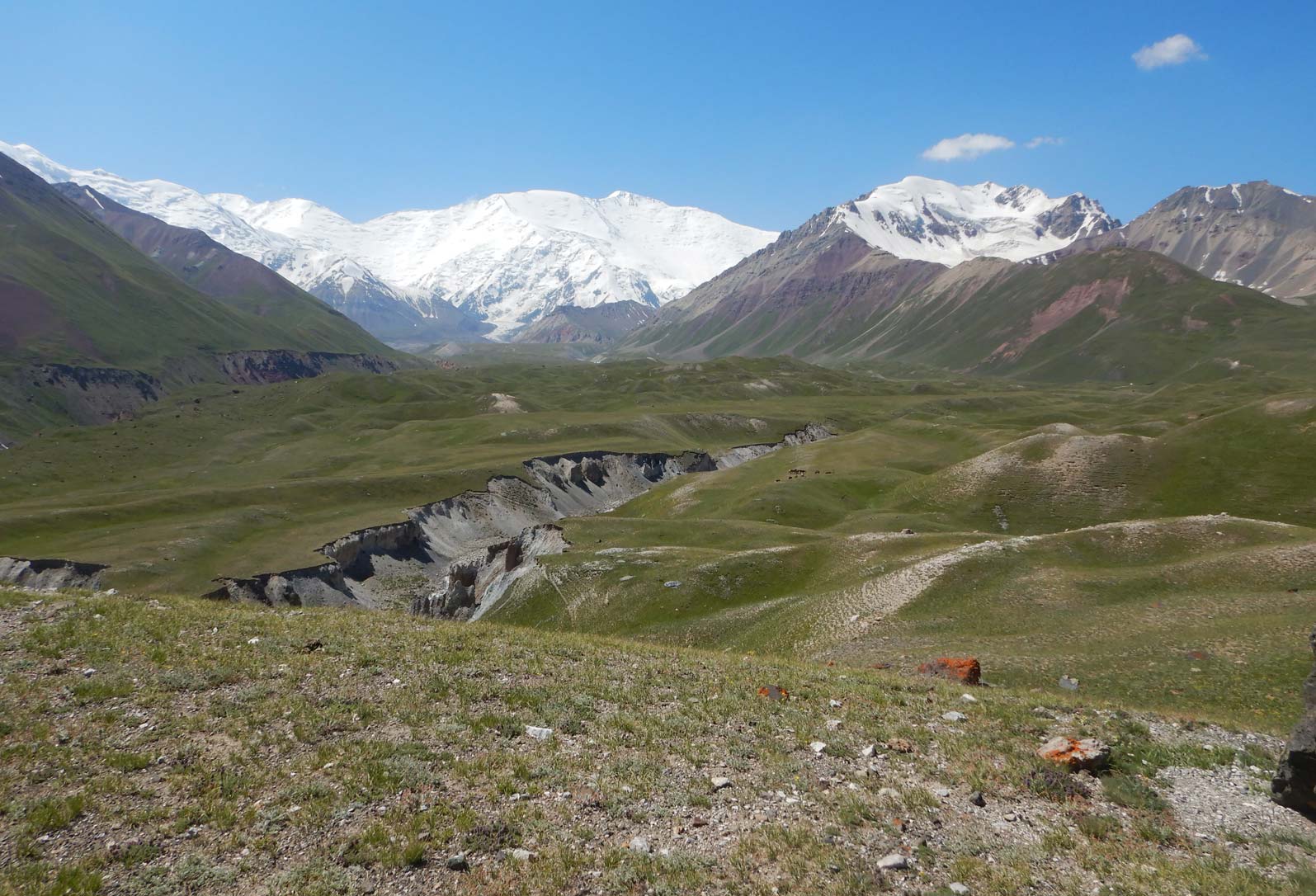
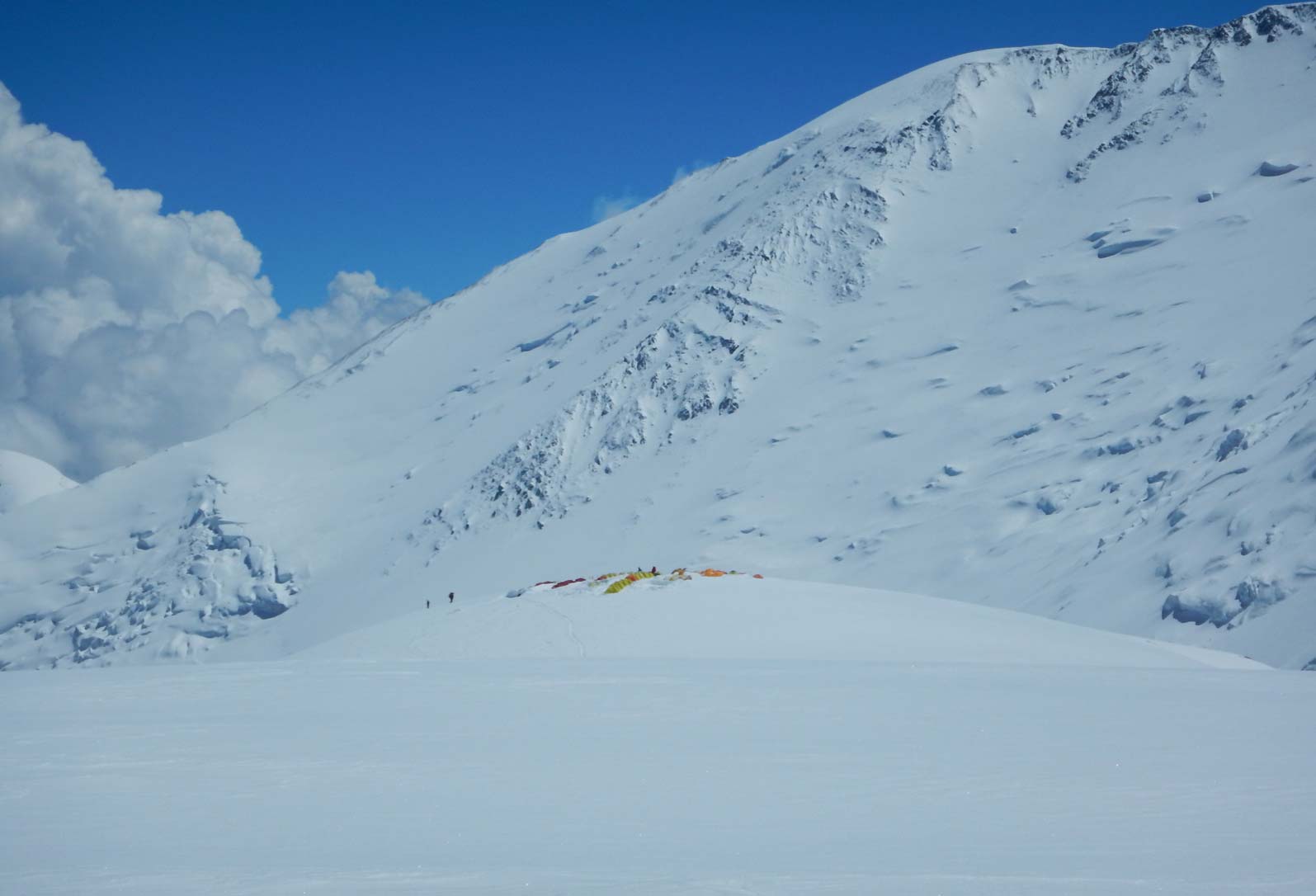
Duration
The climb from base camp to Lenin peak can be done in 14-21 days, depending on weather conditions and an individual’s tolerance (and experience) of altitude.
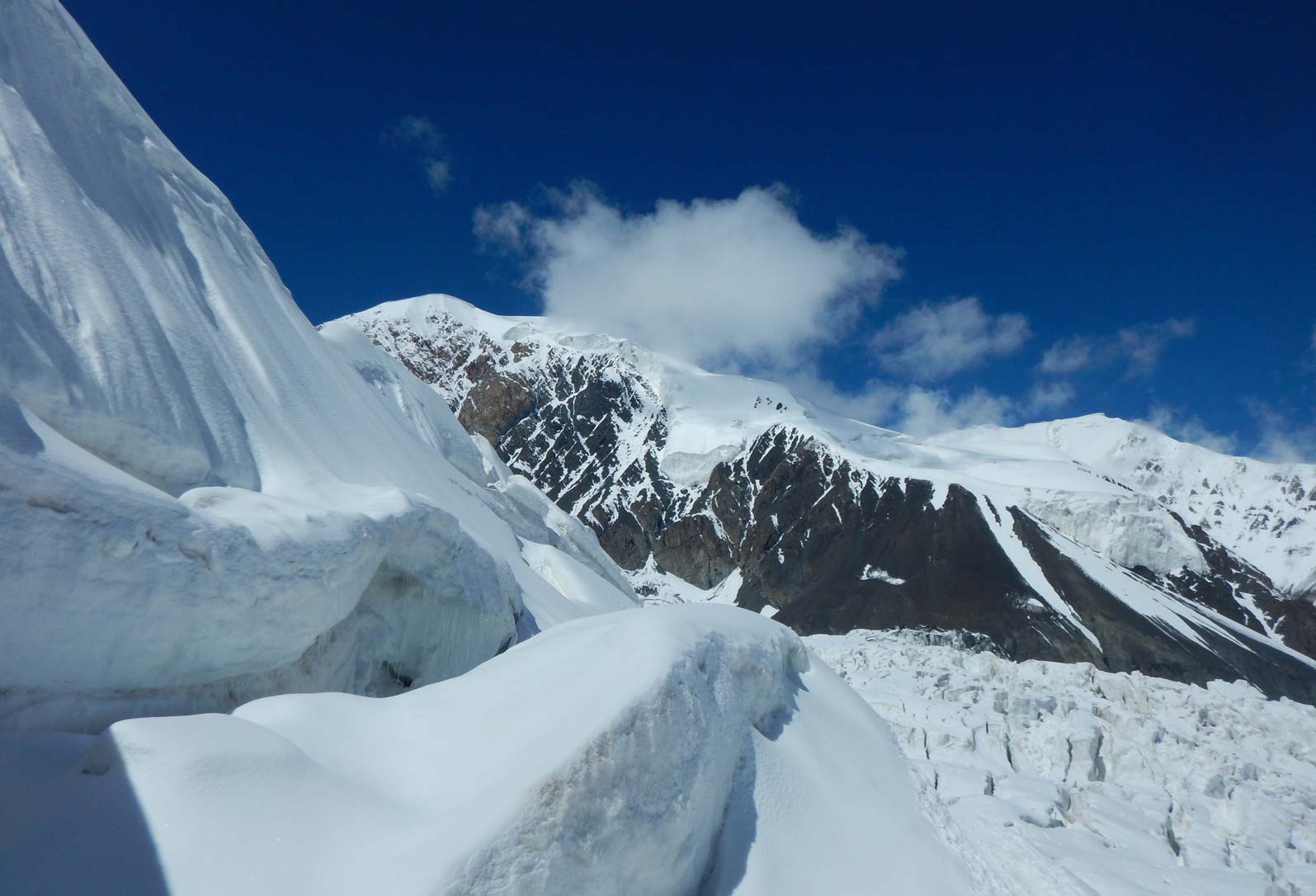
Essentials
Language
Kyrgyz – English is spoken in most camps
Local Currency
Som
Visa Requirements
Please refer to your nearest Kyrgyzstan embassy
Nearest Hospital
The nearest hospital is in regional capital Osh (Osh city hospital Address: Osh oblast, Osh city, 10 Verhne-Uvamskaya Street.Tel: +996 (3222) 55852, but most of hospitals are located in capital Bishkek.
Evacuation
Basic first response to emergency is organized by camp managers and guides operating on the mountain. It is advisable to use a CB radio provided by the agency’s camp manager and keep in contact with them. Some camps have doctors with basic medications available.
Mountain rescue operations are organized by quick reaction groups at the Ministry for Emergency Situations of Kyrgyz Republic. More information is available at:
https://rescue.travelasia.kg/en/home/
https://kac.travelasia.kg/
Climbing Seasons
The peak climbing season is in July and August with best snow conditions and most stable weather. Base camp and advanced base camps are operated only in July and August. May and June are the months with highest precipitation and June has the most rainy days. The amount of precipitation slowly decreases throughout July, August and September. July and August are the warmest months. September has the most sunny days and least precipitation but the temperatures start to decline rapidly and storms become more frequent. July, August and September also have the lowest wind speeds.
Communication
Citizen band radios are widely used and available at advanced base camp for hire. Mobile phones often work on higher camps and summit ridge if your mobile phone provider has a roaming agreement. Satellite phones are another option.
Technical Difficulty
The normal route is not technically difficult. The most demanding parts are about 100 vertical meter section of 40-45° between advanced base camp and camp 2 and the short, 50° steep exposed part of the ridge after camp 4. Steep sections are secured with fixed ropes during the main climbing season.
Knowledge of roped glacier traverse and basic ice and snow climbing skills are essential.
Environmental Considerations
and Mountain Protection
The UIAA is committed to the protection of the mountain environment and has been since its founding in 1932. The UIAA Mountain Protection Commission was formed in 1969. Today the UIAA spearheads a number of projects related to sustainability in mountain regions including its annual Mountain Protection Award, through the work of its Climate Change Taskforce and its many international partnerships. For further details please visit: https://theuiaa.org/mountain-protection/
The UIAA encourages all climbers and mountaineers to consider their carbon footprint and adhere to local regulations and customs once on the ground.
Dangers
The main danger on the mountain is high altitude illness. There are plenty of options for slow acclimatisation. Since evacuation options in case of high-altitude illness are limited and slow, individuals should take extra precautions.
The other dangers are crevasse fall, snow avalanche and from cold and high winds. Crevasse fall can be minimized by roping up for glacier traverse and mastering basic knowledge of crevasse rescue. Avalanche exposure can be minimized by following snow conditions and weather forecast, whereas cold exposure can be minimized with adequate clothing and following the weather forecast.
The UIAA Alpine Handbook offers chapters on crevasses and frostbite. For further information click here.
With many climbers on the mountain the pollution is a serious problem and clean water could be difficult to get. The UIAA Medical Commission has produced the following dedicated video on the subject:
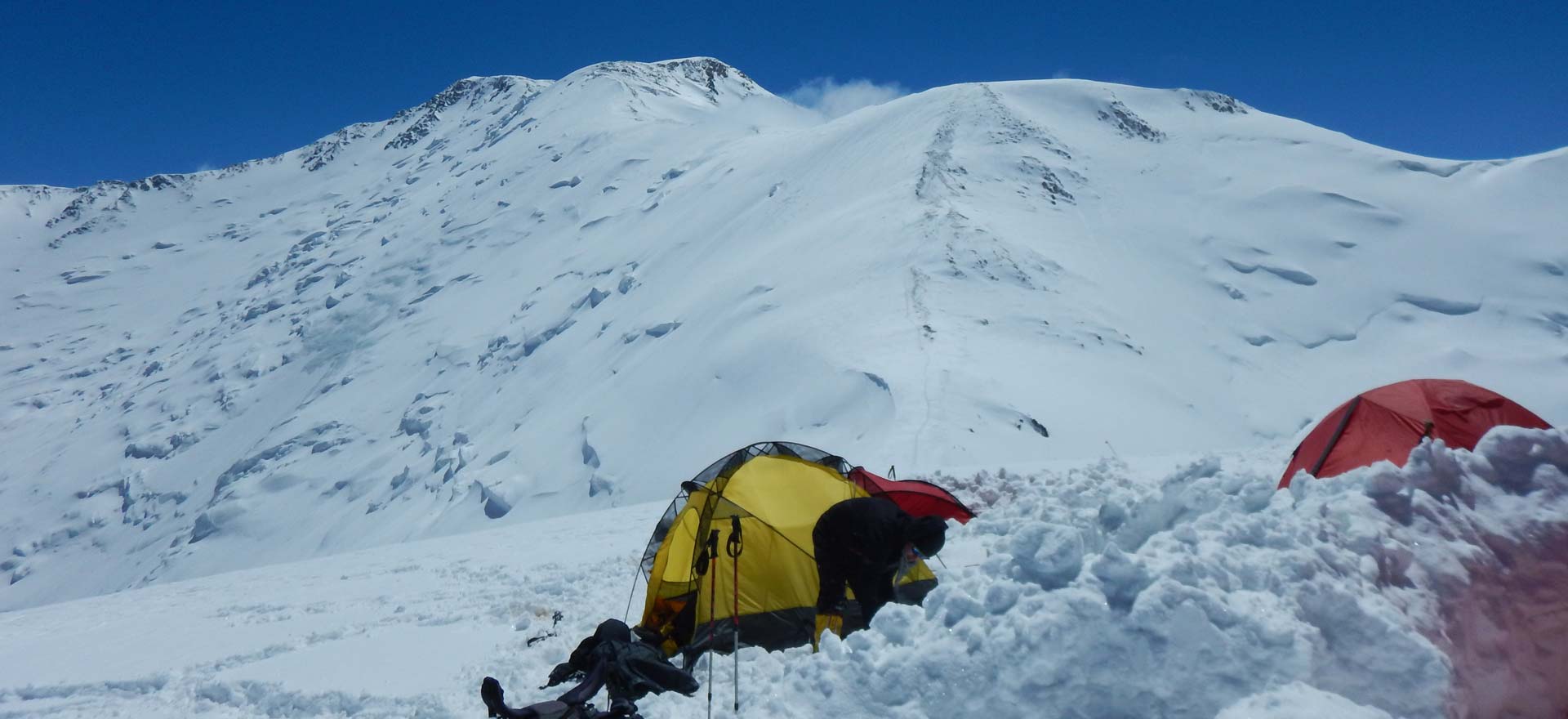
Using Safe
Climbing Equipment
Climbing Lenin Peak requires preparation, training and planning. It also requires having the right equipment. The UIAA encourages all climbers to purchase certified equipment. The UIAA Safety Label is the only global certification for climbing equipment.
The UIAA Safety Label on a piece of climbing equipment means that samples of the equipment have been tested by an accredited, independent third party and shown to satisfy the requirements set forth in the UIAA standard. UIAA standards exist for over 25 times of climbing gear including ice axes, ropes and crampons.
Climbers can search for certified equipment through the UIAA’s dedicated database. Furthermore, the UIAA offers information on how best to purchase climbing equipment.
UIAA Skills Guide
The UIAA is committed to providing climbers and mountaineers with information to develop their skills, whether reinforcing lessons learned and not yet fully assimilated or to increase their technical knowledge and reduce the risks inherent to our sport. The UIAA Alpine Skills Summer guide was first published in 2015. Produced in collaboration with the Petzl Foundation, the guide and has been well received worldwide and is currently available in over ten languages. It covers a host of topics from route planning to frostbite, to reading the weather and climbing in a group. A winter version of the guide will be released shortly. The English language version can be purchased as a digital download here. Foreign language versions are available through UIAA member associations.
Additional UIAA
Medical Resources
MEDICAL ADVICE
Further Reading
Lead Authors – Tomaz Goslar and Alireza Behpour
Images – courtesy of Irena Mrak and Mojca Švajger
All text and content is reviewed by a dedicated working group within UIAA Medical Commission. Discover more here.
